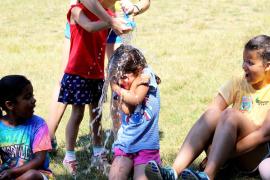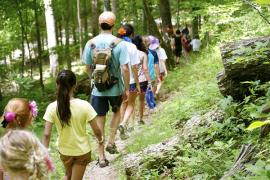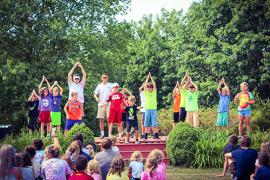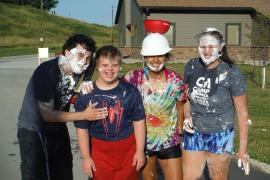Hello and happy fall from the ACA Research Team! With the change in seasons comes an exciting time for Research 360 as we launch ACA’s 5-year research project, the outer circle of ACA’s new strategic direction focused on research and evaluation. In past posts I identified the purpose of this project and the ACA volunteers who will advise the project over the next 5 years. This post rounds out the project’s cast of characters by introducing the university research team who will conduct the research and their plan for the study. But first, a question we hear quite often: Why doesn’t ACA just do the research itself?
Bias & Research Integrity
We’ve discussed before the definition of research, an important part of which is the concept of generalizability: what we learn from research on camp should hold true for most camps. But to do this, the research needs to be unbiased. Working with external research teams on large, formal research projects is one way to minimize bias that could affect which camps are chosen to participate, the questions used to collect data, and the interpretation of the findings.
Think about ACA’s mission, “enriching the lives of children, youth, and adults through the camp experience.” Of course ACA is too biased to conduct its own research- we already believe that lives are enriched by the camp experience!
Avoiding bias is critical if the results of this study are to be trustworthy and useful for camps. Directions, ACA’s largest and most frequently used research study to date, demonstrated the value in working with an external research team; therefore, in keeping with its commitment to research integrity, ACA issued a request for proposals to recruit qualified teams interested in taking on the project.
Selecting the Right Team
Five outstanding teams submitted proposals, each with a unique approach to the broad research question:
Do camp experiences prepare campers and staff to persist and succeed by developing and transferring necessary skills, values, dispositions, and abilities leading to college/career readiness and lifelong learning; and, if so, what enables the development and transfer of these work and life skills for campers and staff?
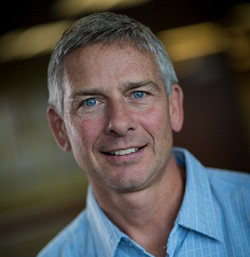 The Research Advisory Group reviewed each proposal, first independently and then together as a group, ranking each one for its rationale, scope, creativity, and ability to provide usable information for camps. ACA’s leadership team then reviewed and accepted the Group’s recommendation.
The Research Advisory Group reviewed each proposal, first independently and then together as a group, ranking each one for its rationale, scope, creativity, and ability to provide usable information for camps. ACA’s leadership team then reviewed and accepted the Group’s recommendation.
The University of Utah, under the direction of Dr. Jim Sibthorp, was selected from among the 5 closely-ranked proposals. Many of you may recognize Dr. Sibthorp, he is a long-time ACA collaborator and recent winner of the Hedley S. Dimock Award for his service to camping. Dr. Sibthorp’s work extends beyond ACA, though; in fact, his work with the National Outdoor Leadership School produced many years of research evidence that NOLS uses regularly to train staff and improve their programs.
The Project
Here are some highlights from Dr. Sibthorp’s nearly 30 page proposal:
- Participants in all phases of this study will be recruited directly from camps in order to get a sample that represents the general camp population: day and resident, independent and not-for-profit, affiliation, and regional location.
- The Project’s aims and methods align with the National Research Council’s work on college and career readiness, which means that reports on the results of this project will help position camp within the broad context of youth development programs.
- Year 1 begins by interviewing past campers and staff who have been impacted by the camp experience to understand how they were impacted and features of the camp experience that were influential.
- Year 2 will narrow the broad outcomes and camp features participants described in Phase 1 into a survey that will be given to a similar but much larger sample of past campers and staff. From this survey the team will have evidence of common camper outcomes and the camp features that promote those outcomes. Research in other youth settings, such as afterschool programs, suggests that these outcomes could include problem solving, interest in learning, responsibility, and interpersonal skills; and features that promote these outcomes could be opportunities for choice, small group living, and relationships with caring staff.
- From this sample, the research team will select about 500 campers, staff, and camp families to complete 4 surveys and two follow-up interviews each year for three years. The focus of this phase will be if and how campers transfer what they gain at camp to non-camp settings over time. Because this study will track a set of campers and staff over time, it will be the first national longitudinal study of the camp experience.
- Dr. Sibthorp and his Research Team will report the findings each year to the Research Advisory Committee (ReAC) and to the camp community at ACA events and through publications such as the Research 360 Blog, Camping Magazine, and scientific journals.
Interested to learn more? Follow the Research 360 Blog, which will be the camp community’s source for updates and information about the study. In the meantime, keep thinking about the ways your camp engages with research and evaluation, whether it is by attending the upcoming Research Symposium at the ACA National Conference in Albuquerque, reading research abstracts from past conferences or briefing papers that summarize research on camp-related topics, or by using any of ACA’s research tools to learn more about your campers and how you continually improve your camp’s programs. Big R or little r, it’s all a part of Research 360!
Laurie Browne, Ph.D., recently joined the Research Team at ACA. She specializes in ACA's Youth Outcomes Battery and supporting camps in their research and evaluation efforts. Prior to joining ACA, Laurie was an Assistant Professor in the Department of Recreation, Hospitality, and Parks Management at California State University-Chico. Laurie received her Ph.D. from the University of Utah, where she studied youth development and research methods.
Thanks to our research partner, Redwoods.
Additional thanks goes to our research supporter, Chaco.
The views and opinions expressed by contributors are their own and do not necessarily reflect the views of the American Camp Association or ACA employees.


